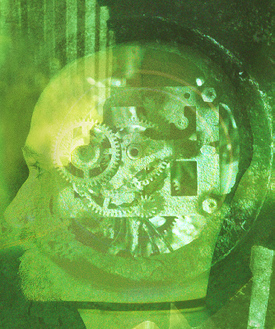|
|
 Drew’s Note: As I try to do every Friday, I’m pleased to bring you a guest post from yet another interesting thought leader who shares his insights via the blogosphere. So without further ado…Jay Ehret. Enjoy!
Drew’s Note: As I try to do every Friday, I’m pleased to bring you a guest post from yet another interesting thought leader who shares his insights via the blogosphere. So without further ado…Jay Ehret. Enjoy!
It was the spring 1988, in my early days as a radio advertising sales representative. "Account Executive" is what they called me. I sat across the table from the owner of a small, local sandwich shop in Waco, Texas, and took out a piece of paper.
"The elements of a successful advertising campaign," I began "are message, reach, and frequency." As I listed each element, I would draw a circle on the paper, and label it. Then I put plus signs between the circles, and capped it off with an equals sign pointing to "success."
What a simple time it was in the days of old media. Can you imagine that pitch in today’s new media? It wouldn’t work. Message, reach and frequency have been replaced by volume, spam, and hyperbole.
In today’s internet-driven marketing, the goal seems to be to make the most boastful claim in a highly forceful manner and then force feed it to as many email addresses and internet browsers as possible. So does that mean the rules of old media no longer apply?
To answer that question, we need to look at the brain. Because I’m not a neuroscientist, I’ll let John Medina look at the brain instead. Plus he’s already done the dirty work with a book called Brain Rules. You can find much of the book’s basic information on Medina’s nifty Brain Rules website.
What You Remember
You don’t remember things accurately. That’s not a knock on you. Humans don’t remember things accurately. It’s just the way the brain works. In fact, it’s highly likely that my introduction story didn’t actually happen the way I remember it. The sandwich store owner, who is still a friend today, probably remembers that meeting differently or not at all.
The problem is that you forget most of what you learn within hours of contact. Why? Scientists don’t really know, it’s just the way the brain works. The typical human brain can only hold about seven pieces of information for less than 30 seconds. Rarely are memories fixed at the moment of learning, even if you engage in loud exaggeration.
But Medina also points out that while we forget a great deal within the first hour of our exposure, "this loss could be lessened by deliberate repetitions." Further, Medina explains that "repeated exposure to information in specifically timed intervals provides the most powerful way to fix memory into the brain."
Marketers struggle to get consumers to remember their message in an over-marketed world. Yet we consistently ignore one of the most potent ingredients of memory: frequency! Creativity and innovation are celebrated in ad agencies and books, but frequency rarely is. Please introduce me to your Frequency Director or Frequency Evangelist.
Brain Rules
Every marketer should read chapters 5 and 6 of Brain Rules by John Medina. It may be the most important 51 pages you ever read. Marketers have created a lot of their own rules in this age of new marketing. But we shouldn’t forget the rules of the brain.
Your differentiating message, your advertising campaign, your brand promise requires a lot of repetition before it can be retrieved. It turns out that the brain has made the strongest case yet for frequency.
Jay Ehret is founder and chief steward of The Marketing Spot, a small business marketing coaching and consulting firm in Waco, Texas. He blogs at The Marketing Spot and is a contributor to the upcoming book Age of Conversation: Why Don’t They Get It.
Every Friday is "grab the mic" day. Want to grab the mic and be a guest blogger on Drew’s Marketing Minute? Shoot me an e-mail.
